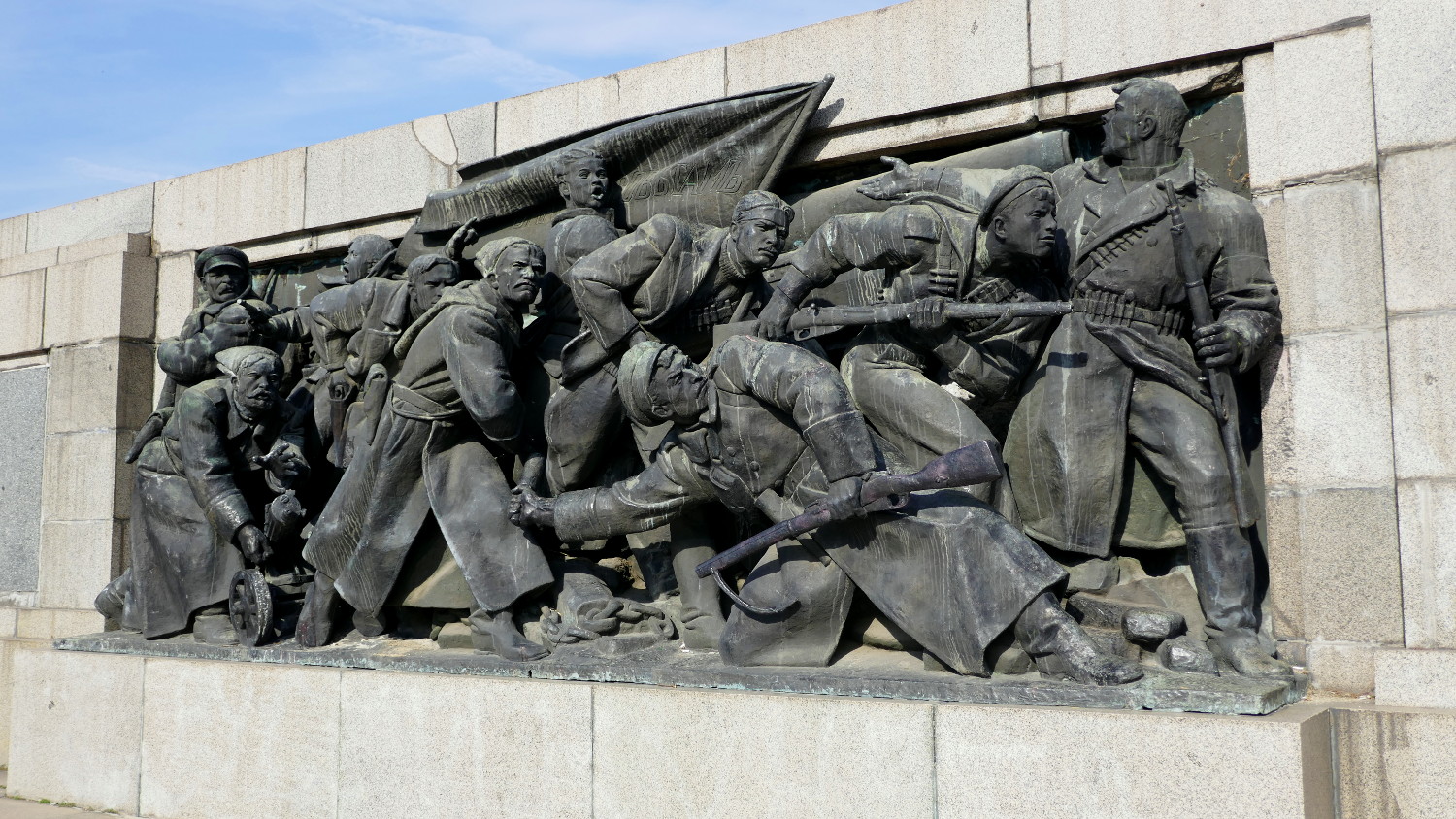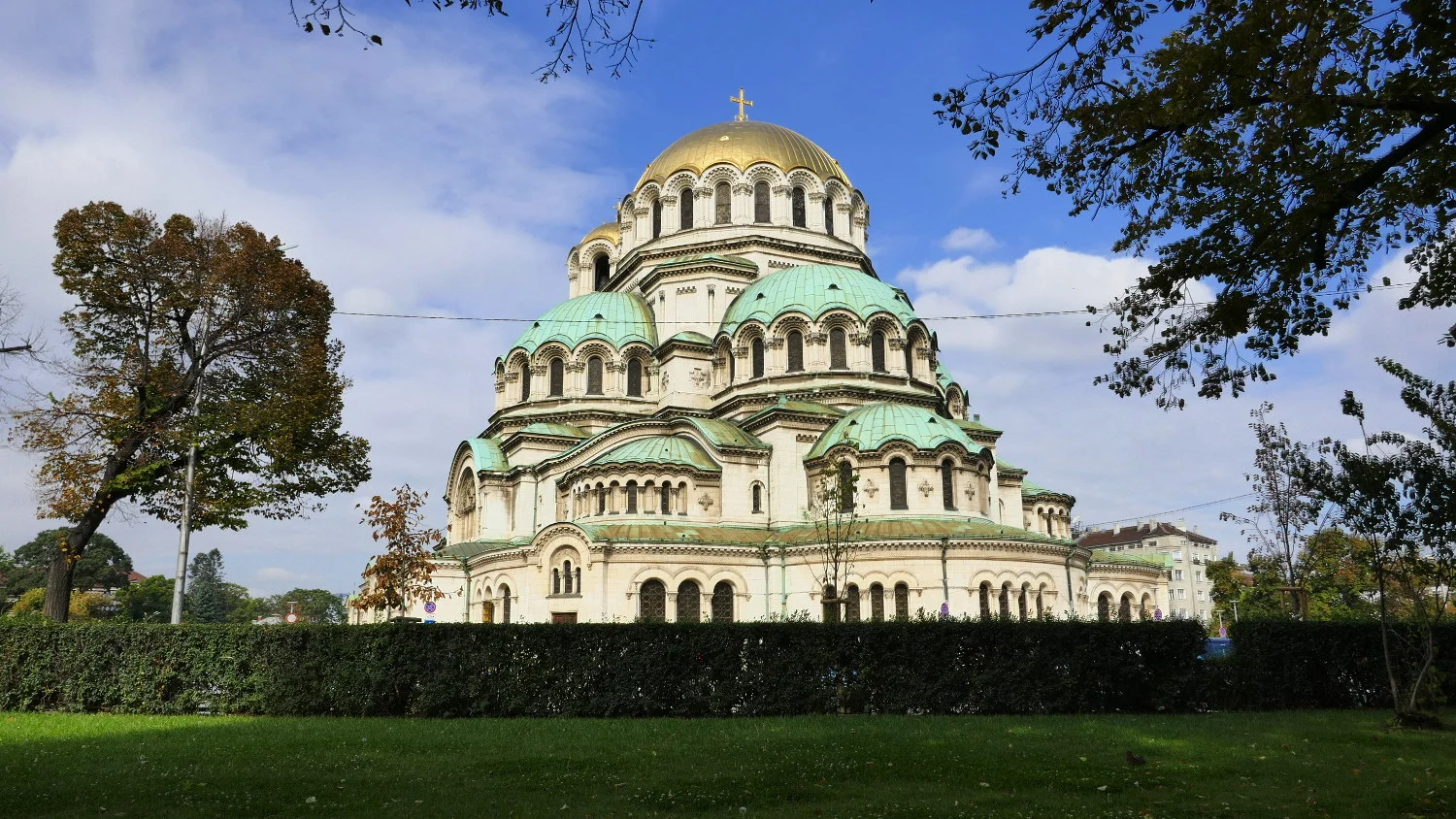City Guide to Sofia, Bulgaria: Part 1 | Travel Tips & Tourist Information
If you're planning a visit to the up and coming city of Sofia, Bulgaria and are in need of a city guide, then you've come to the right place. We spent nearly two weeks in city center and took in everything we could of this wonderful city! Read on for all of the travel tips and tourist information you'll need.
Disclosure: We may receive a commission for links on our blog. You don’t have to use our links, but we’re very appreciative when you do. Thanks again for your support, we hope you find our posts and information helpful!
We landed in Sofia, Bulgaria and found so much more to the city than we expected! While visitors often make a beeline out of Sofia for the ski resorts in the winter and the beaches in summer, we can’t help but encourage you to stay a few days (or longer) in Bulgaria’s capital: Sofia. It’s not the city of endless attractions, like Paris or London, but what there’s to see packs a punch! The ruins under the city reminded us of Athens, the churches of many different religions showcased the tolerance of the city to coexist, and the mix of communist architecture interspersed with the modern reminded us that Sofia is overcoming a former Soviet occupation.
We started our long-term travels over 10 months ago, and we’ve learned a few key lessons since then. One in particular is that while we can travel at a fast pace, we can only do so for so long. So, we’ve learned that sometimes we need to slow down and have a bit of a break. Sofia, being outside of Schengen and having a low cost of living, turned out to be a great place for us to take a short break. Naturally, we can’t go to a new city, in a country we’ve never visited before without exploring! Be sure to read our City Guide to Sofia, Bulgaria: Part 3 | Must See Attractions if you want to fall in love with this up and coming and off the beaten path city!
Sofia Basics
Before visiting a new or unfamiliar place, we’d feel comfortable going out on a limb and saying that it’s wise to learn a few basic things to make your stay even more enjoyable.
Currency in Sofia, Bulgaria
Bulgaria has been a part of the European Union since 2007, but they're one of several countries that haven’t yet adopted the Euro. This is probably one of the reasons, why up to now the cost of living has remained low within its borders. Keep in mind though, Bulgaria has made strides in meeting European Union guidelines for adopting the Euro, so it won’t always be like this.
The national currency is the Bulgarian lev, of which the plural is leva and the abbreviation used on price tags is lv. Lev come in 2.00, 5.00, 10.00, 20.00, 50.00, and 100.00 bank notes, as well as 1.00 and 2.00 coins. Also, one lev is divided by 100 Stotinkas and come in 0.01, 0.02, 0.05, 0.10, and 0.50 coins. If you can, we’d recommend avoiding 50.00 and 100.00 lev bank notes and instead asking for smaller bills. This will reduce your probability of running into trouble when making a purchase and needing change from a large bill.
Tip: Reduce your chance of being scammed and given counterfeit or out of circulation money! Take a moment and familiarize yourself with the banknotes and the coins that are currently in circulation.
Language in Sofia, Bulgaria
The national language in Bulgaria is Bulgarian, which is an Indo-European language and part of the Slavic linguistic group. When visiting, you’ll notice right away that Bulgarian is written with a Cyrillic (non-western) alphabet, which can make reading it nearly impossible for a westerner. However, you’ll be glad to know that many signs are translated using a western alphabet, and commonly go as far as being translated into English. Moreover, many people, especially younger people know English, so don’t feel bashful asking for help! As a digression, a café we regularly frequented in the city normally had people practicing English, Japanese, and Spanish!
Getting Around Sofia
Learning how to get around a new city is always one of the first hurdles any visitor needs to tackle. If you’re like us, we rarely take taxis, only request Ubers when circumstances require, and primarily travel by public transportation and walking. In an effort to make arriving and navigating a new city a bit easier, we always do research ahead of time. So, to make things a bit easier for you, here's the information we found ahead of time coupled with the tips we gathered during our visit to Sofia.
Walking Around Sofia
Since walking is essentially the same anywhere you go, and is made significantly easier with Google Walking Directions, we generally only do a quick search on street safety for tourists before arriving. When we’re unsure about a route Google is directing us on, we take advantage of the street view tool and look around to see if there are sidewalks for pedestrians.
Our experience with Sofia was generally positive, especially since we were staying in downtown. While the condition and width of the sidewalk varied, most streets had sidewalk on both sides and we felt safe walking around, both together and on our own. We took a couple excursions outside of city center and into the suburbs, and still felt safe and comfortable as pedestrians, although we did have to make a few crossings on bridges and walked on highways that if given the option, we’d avoid purely for safety from fast passing vehicles.
Public Transportation in Sofia
A great option for getting around Sofia is public transportation, which includes two metro lines, buses, trams, and trolley buses. We found the network to be comprehensive, clean, and inexpensive. It’s also, in our opinion, the best way to get to and from the Sofia Airport (SOF).
Before we arrived in Sofia, we did research on how to use the public transportation system, and once we arrived, sure enough, we put the system to use to get to our chosen destinations. Therefore, to hopefully help you navigate and make the most of the system, we have a City Guide to Sofia: Public Transportation, where we’ve put all of our research, tips, and experience together in one place.
Experiencing Sofia
When we arrived in Sofia, we didn’t know exactly what to expect of the city and were eager to see what living there would be like. Upon landing, we immediately noticed that it had similarities to many other post-communist countries we’ve visited, like Bucharest and Budapest. In our humble opinion, the architecture, roadway and pedestrian infrastructure, and demeanor of locals are in many ways alike. However, while each city may have commonalities, often times when we look a bit deeper, we uncover the unique culture of each place. This is what we love about every place we visit; No two places are the same!
The first thing we did when we arrived was go straight to our Airbnb and settle in. The cost of living here is so reasonable, that we were able to rent an entire apartment in city center Sofia for less than $20 USD a night! It was small, but worked really well for the two of us. It was nice to have our own space, come and go as we pleased, have full access to a kitchen, and be only a few minutes’ walk to shopping and sightseeing. We’ve used Airbnb in many of the cities we’ve visited across Europe and find it to be a great tool in our toolbox to saving money on lodging. Don't forget to use our Airbnb link and save up to $40 off your first stay!
After settling into our Airbnb, we set off to explore the city. Be sure to check out our City Guide to Sofia, Bulgaria: Part 3 | Must See Attractions to see everything we did, but proceed with caution, as readers may be subject to wanderlust! If you’ve been following us, you may know that when we explore, we try to leave no rock uncovered, and Sofia was no exception. We love to find hidden gems and to wander off the beaten path. As expected we explored many of the neighborhoods in city center and also ventured into the suburbs. We even took a nearly nine mile walk, to see the Snail House, an extremely unique sight, especially since it’s in Sofia’s suburbs!
We found that Sofia has a rich history that dates back to ancient times, with ruins that can still be seen today and a history that spans through the communist era but is quickly evolving and modernizing for the 21st century. It isn’t hard to discern a conflict of culture between the elders of the city that hold on to old traditions and customs, and the young generation that isn’t shy about making their mark on modernizing and transforming the ‘scene’ in Sofia. As we walked the streets of the city, the architecture varied from building to building, and it wasn’t unusual to see Baroque architecture, socialist dormitory buildings, and modern sleek buildings all on the same block. The contrast is incredibly striking!
Of course every city has its downsides, although they’re largely subjective and based on personal opinions. For us, we immediately noticed a culture that from our personal experience was standoff-ish and stern. We noticed it when people on the streets didn’t smile much and when we interacted with people in public spaces, the niceties we’re accustom to, like ‘Excuse me’, ‘Thank you’, etc. where missing. On the other hand, when we spent time with a person and started a conversation, more often than not, that stern demeanor quickly fell, revealing a kind and warm person. Although, even knowing this, it can be challenging when you don’t observe happy demeanors while walking down the street (regardless of what city or country you're in). With that said, keep in mind that in our experience people in Sofia are overwhelmingly good, kind, and happy!
Of all the amazing and beautiful aspects of Sofia we discovered, there was one that was less than ideal. Unfortunately, the air quality was noticeably poor, both in the city and in the suburbs. After a few miles of walking, we could feel our throats tighten a bit and become dry, and often passing cars left a trail of exhaust that could be smelled for some time. We learned to hold our breath, or walk quickly through certain areas, but unfortunately, this phenomenon isn’t unique to Sofia. Even in the US, where emission controls are more strict and strongly enforced (to clarify, we’re not experts on emission controls in the US, nor in Bulgaria), the air in large cities can be quite polluted!
Final Thoughts
We can’t say enough how much we enjoyed Sofia and how it was a fantastic place to take a break from a busy travel schedule. Sofia offered historically impressive sites, an affordable cost of living, and small tourist crowds. We’re now fans of Sofia, and wonder what the rest of Bulgaria has to offer!






